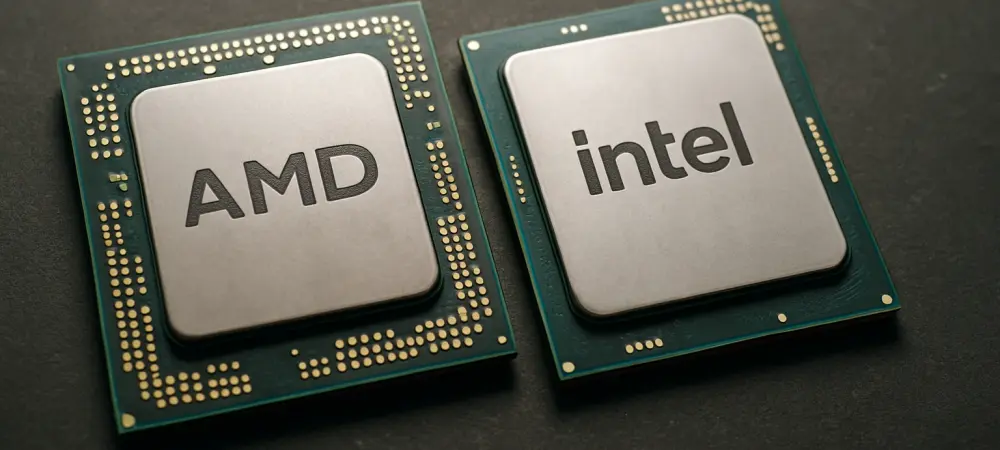In a rapidly evolving tech landscape, the battle for supremacy in mobile CPU performance continues to heat up, with AMD and Intel pushing the boundaries of innovation to capture the attention of laptop manufacturers and consumers alike. A recently leaked roadmap from a prominent Spanish laptop maker offers a fascinating glimpse into the strategic plans of these two industry giants over the next couple of years, extending through 2027. This detailed forecast highlights upcoming architectures, manufacturing advancements, and performance tiers that could redefine the capabilities of laptops, gaming consoles, and beyond. As both companies race toward smaller, more efficient production nodes and cutting-edge designs, the implications for power efficiency and raw performance are profound. This insight into their trajectories not only underscores the fierce competition but also signals transformative shifts in how mobile computing will evolve to meet diverse user demands, from budget devices to high-end systems.
AMD’s Ambitious Architectural Evolution
The leaked roadmap paints a vivid picture of AMD’s forward-thinking approach to mobile CPUs, with a clear progression of its Zen architecture set to dominate various performance segments. By 2026, plans are in place to roll out laptops featuring 12-core Gorgon Point CPUs based on the Zen 5 architecture, utilizing a 4nm process. These chips target the upper-midrange tier with a power range of 15 to 54W, building on the legacy of Strix Point and Kraken Point designs. Meanwhile, high-end laptops exceeding 45W are expected to retain the powerful 16-core Fire Range processors through late 2026, ensuring that premium performance remains a priority. Perhaps most exciting is the anticipated debut of Zen 6 in 2027, with Gator Range stepping in to replace Fire Range in the high-end segment, and Medusa Point succeeding Gorgon Point in the midrange, both leveraging a cutting-edge 3nm process and the FP10 socket for enhanced efficiency and speed.
Beyond these developments, AMD’s roadmap reveals a comprehensive strategy to address every market level while integrating next-gen graphics for broader applications. Mid-tier Hawk Point laptops, equipped with eight Zen 4 cores, are slated to shift to a lower performance bracket this year, while entry-level products in the 6 to 15W range will continue relying on the older Zen 2-based Mendocino processors for the foreseeable future. A mysterious “Medusa BB” architecture is also projected to replace Hawk Point by mid-2027, hinting at further innovation in the midrange space. Additionally, Zen 6 cores paired with RDNA 5 or UDNA graphics are expected to power upcoming gaming consoles, potentially including successors to current PlayStation and Xbox systems. This ambitious blend of CPU and graphics advancements suggests AMD is positioning itself as a leader not just in laptops but in the broader gaming ecosystem through 2027.
Intel’s Strategic Moves and Challenges
Turning to Intel, the roadmap provides a more restrained but still significant outlook on its mobile CPU plans through 2026, reflecting a focus on critical manufacturing advancements. Late this year, Intel is expected to introduce Panther Lake-H CPUs built on the 18A node, a pivotal step aimed at reclaiming competitive ground in semiconductor production. This transition is seen as essential for enhancing power efficiency and performance in high-end mobile segments. While details remain sparse, the adoption of this advanced node signals Intel’s determination to address past challenges in manufacturing and compete more effectively with AMD’s aggressive scaling to smaller processes. The focus on Panther Lake-H underscores a strategic pivot toward reclaiming technological leadership in a market increasingly driven by efficiency and raw power.
In parallel, Intel’s plans for the midrange and entry-level segments reveal a cautious yet deliberate approach to market coverage. In the 28W midrange and 15W mainstream categories, Wildcat Lake is set to replace Raptor Lake this year, although specifics about performance improvements or architectural changes are limited in the leak. Meanwhile, entry-level laptops in the 7 to 15W N-series range are projected to continue with Twin Lake through mid-2026, with no immediate indication of newer architectures like Nova or Bartlett Lake entering the fray. This conservative timeline suggests Intel may be prioritizing stability in lower tiers while concentrating innovation efforts on higher-end products. The contrast with AMD’s broader and more detailed roadmap highlights differing strategies, with Intel potentially playing catch-up in outlining a comprehensive vision for all market segments through the coming years.
Shaping the Future of Mobile Computing
Reflecting on the past few years, the leaked insights into AMD and Intel’s mobile CPU strategies through 2027 reveal a dynamic rivalry that has driven significant technological strides. AMD has laid out an expansive vision with Zen 5 and Zen 6 architectures, paired with advanced graphics, positioning itself as a formidable force across laptops and gaming consoles. Intel, while more reserved in its disclosed plans, has shown a determined push with the 18A node, aiming to restore its manufacturing edge. For stakeholders and tech enthusiasts, the next steps involve closely monitoring how these projected advancements translate into real-world products. Keeping an eye on performance benchmarks, power efficiency gains, and market reception over the subsequent years offers a way to gauge the true impact of these roadmaps. As both companies strive to balance innovation with diverse consumer needs, the unfolding competition promises to deliver transformative computing experiences tailored to every user segment.

